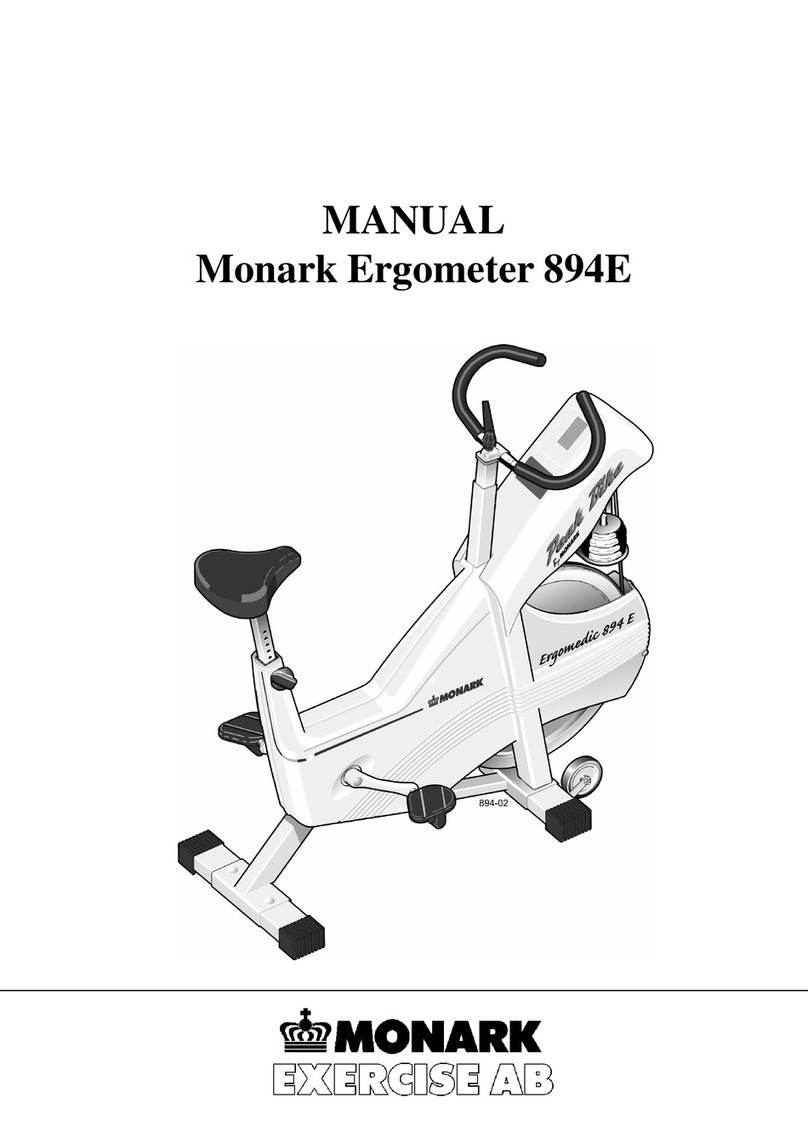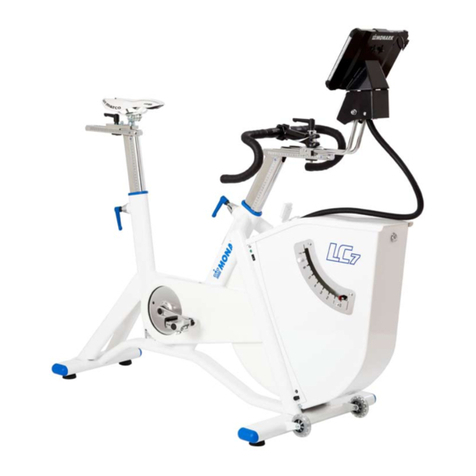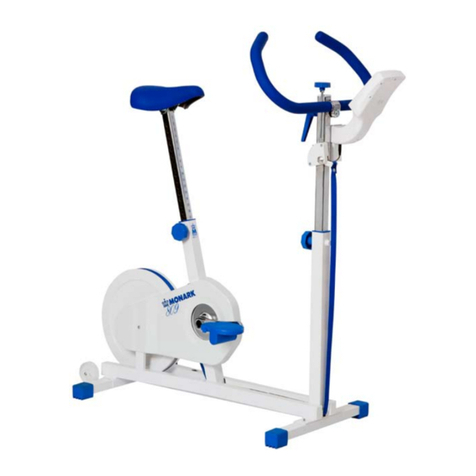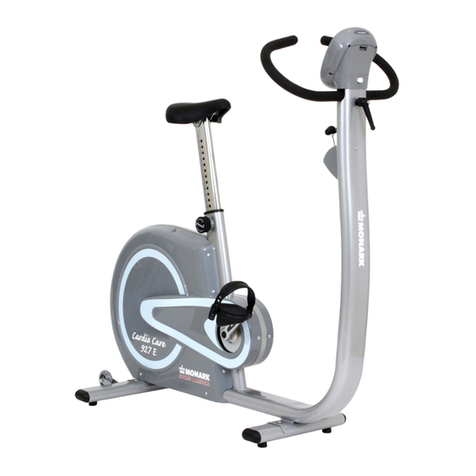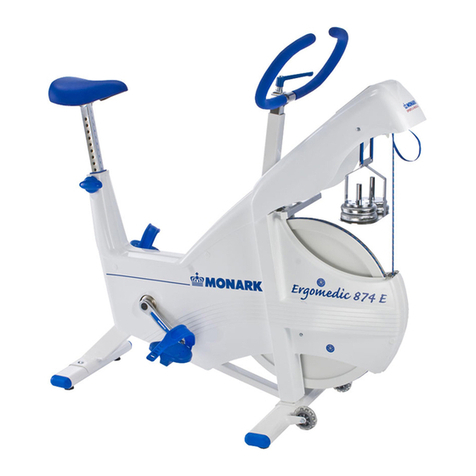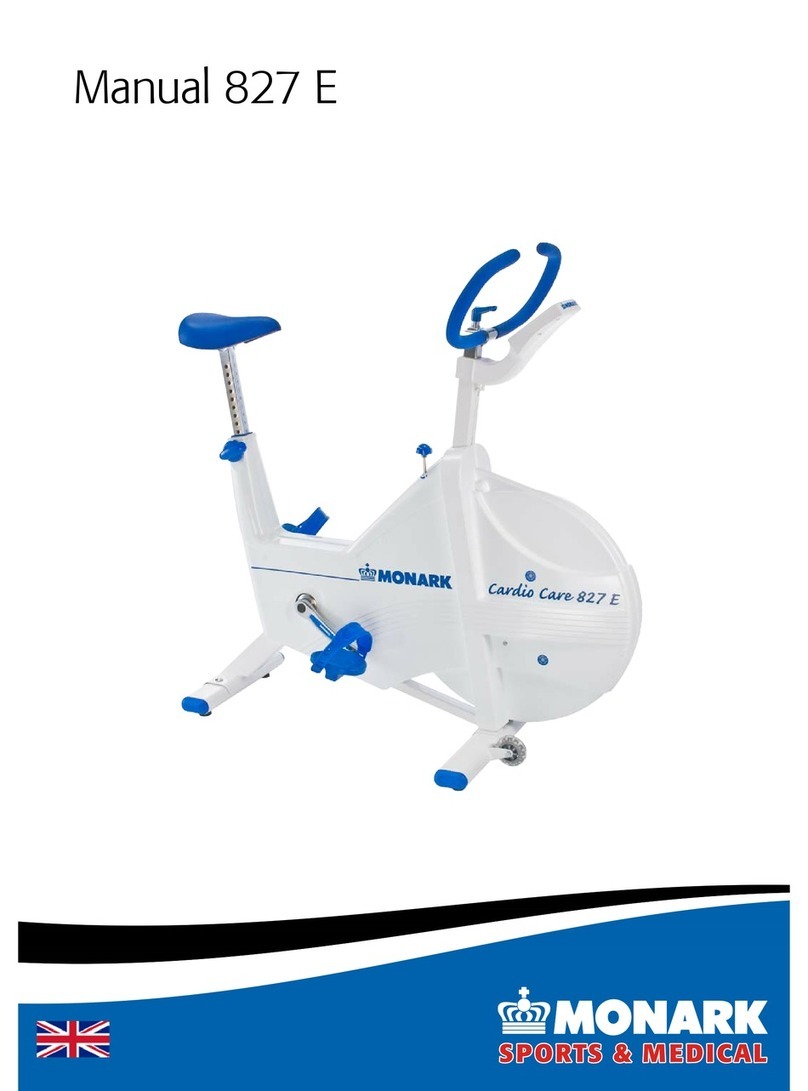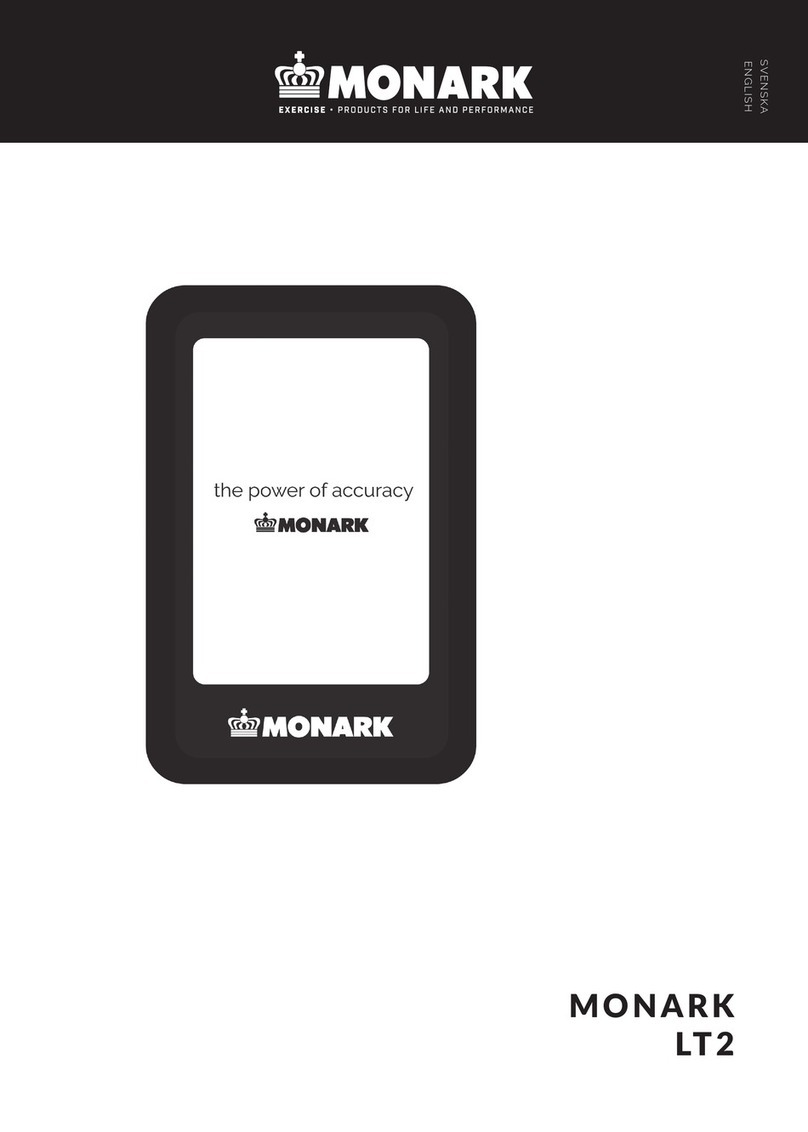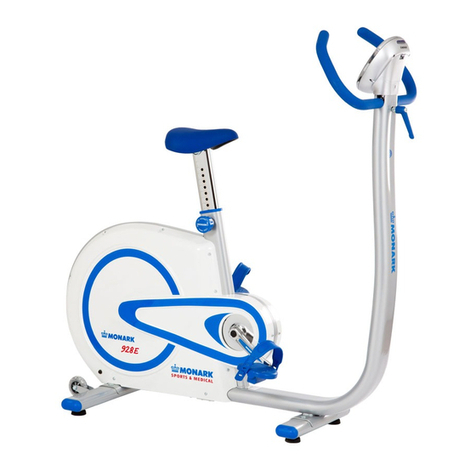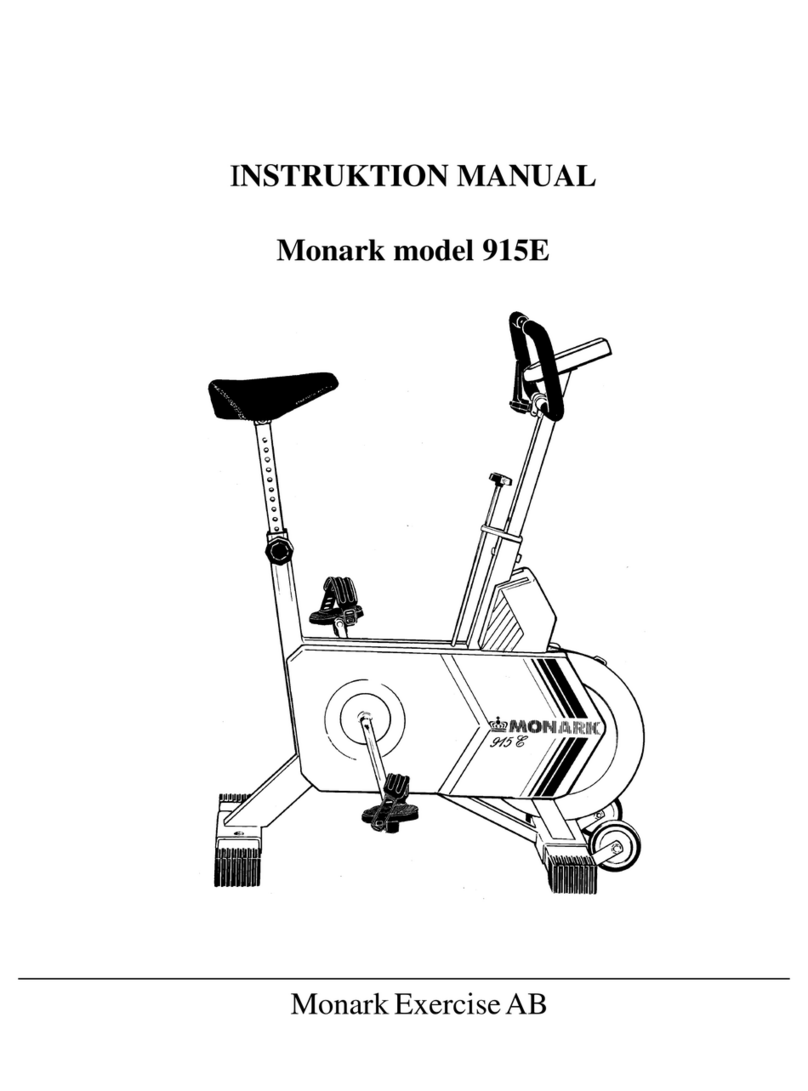Service
1
Service
Warranty
As on any quality product there may be an ex-
ceptional fault due to material or manufacture.
If such a fault should arise on your Ergometer,
contact your place of purchase to inquire about
repair.
Monark products and parts are guaranteed
against defects in materials and workmanship
for a period of one year from the initial date of
purchase of the unit.
Parts found to need replacement due to normal
wear and tear, such as brake belts, are not cove-
red. This guarantee covers parts only, not labor
costs associated with the repair. This guarantee
does not apply to cases of abuse or vandalism,
nor does it extend to any injury or loss to person
or property caused directly or indirectly by any
Monark products.
In the event of a defect in material or workman-
ship during the warranty period, Monark Exer-
cise will repair or replace (at its option) the pro-
duct. Monark Exercise will do so at its expense
for the cost of materials but not for labor or ship-
ping.
Service check & maintenance
To keep your Ergometer in good shape you should
make a regular service.
Keep your Ergometer clean and properly lub-•
ricated.
Periodically wipe the surface with a rust pre-•
ventative, especially when it has been cleaned
and the surface is dry. This is done to protect
the chrome and zinc parts as well as the pain-
ted parts.
When cleaning and lubricating be sure to•
check that all screws and nuts are properly
tightened.
Be sure that all moving parts as crank and•
flywheel are working normal and that no
abnormal play or sound excsists. I.e. play in
bearings causes fast wearing and with that
follows a highly reduced lifetime.
Check now and then that both pedals are•
firmly tightened. If not the threading in the
pedal arms will be damaged. Also check that
pedal arms are firmly tightened on the crank
axle, tighten if necessary. When the Ergome-
ter is new it is important to tighten the pedals
after 5 hours of pedaling.
Check that the chain is snug and there is no•
play in the pedal crank
Be sure that the pedals are moving smoothly,•
and that pedal axle is clear of dirt and fibers
Check that the pedal crank is secure to the•
crank axle
Check that pedals, chain and freewheel sp-•
rocket are lubricated
Check that the handlebars and seat adjust-•
ment screws are lubricated
Be sure that the brake belt does not show sig-•
nificant signs of wear
Transport
At transport the tension device should be so-
mewhat tightened to prevent the brake belt from
falling off of the fltwheel.
Please note: The production number of your
Ergometer is placed according to fig: Serial
number.
Fig: Serial number (1)
